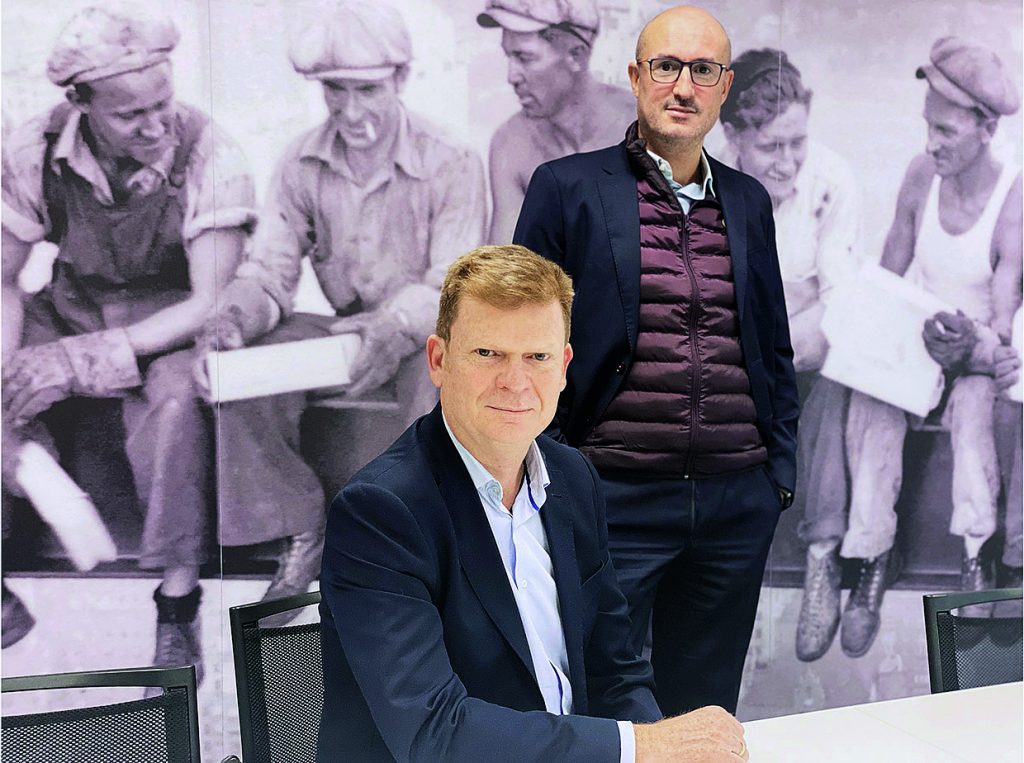
The future comes in the form of Cloud-based hybrid data architectures
INTERVIEW IN EL MUNDO, Sunday, 20th March: Ignacio Barahona, Founding partner and Head of Data Value at Innova-tsn and Juan Ignacio Moreno, Head of Business Development and UK Country Manager at Innova-tsn.
The way Ignacio Barahona and Juan Ignacio Moreno explain what is new in the sector and anticipate what the future will bring exudes their passion for the work at Innova-tsn, who have been transforming customers’ businesses for 18 years, thanks to the design and implementation of Advanced Analytics solutions based on the capabilities of Machine Learning and Artificial Intelligence.
How does Innova-tsn differentiate itself in such a competitive market?
J.I.M. Specialisation is one of our distinguishing factors. Also, our vision of the relationship with our customers: we become integrated into their strategy and long-term goals, thus establishing a relationship of trust which bets on the transition towards data-driven companies, where Artificial Intelligence (AI) is present in the whole of the organisation’s value chain. Finally, our main differentiation is based on the quality of our human capital. We have an important group of people who have been with us for many years and who are Innova-tsn’s guarantee of success. Innova-tsn’s puts its main focus on their care, training and progress.
How have the latest technologies evolved in fields such as Data Value and Advanced Analytics to become the solutions you offer today?
I.B. I would say that in terms of both Data Value and Analytics, the most significant evolution is how the gap between development and operations is closing. An example of this is MLOps and DataOps: a combination of processes, best practices and technologies that offer a scalable, centralised and governed way to automate the development and management of Machine Learning (ML) applications and data insights respectively in production environments. MLOps makes it possible to monitor analytical models and assess their health, automating the management of their lifecycle and, of course, to have a governance model that allows a centralised view of all of them. As for DataOps, it allows new insights to be made available quickly, guaranteeing high data quality and very low error rates, providing a collaborative environment between technologies and teams and a clear and transparent measurement tool. DataOps combines agile development methodologies with DevSecOps and SPC (Statistical Process Controls) to minimise errors.

“Our solution portfolio is very specific, aligned with the specialisation that characterises us”.
How will these technologies evolve this year? Which trends will be most dominant?
I.B. If we were to talk about data trends, they are all related to data governance. I would highlight five. Firstly, having a single source of truth. It sounds obvious, but it is still one of our customers’ most repeated needs. Secondly, we have advanced in the past few years in the creation of data lakes and other normalised and denormalised information repositories, and we must work on regularising how data is collected. We should require minimal manual adjustments to the data. This is even more important if the data is to serve as input for ML solutions. The third thing is that we have been talking about the democratisation of data for a long time, and for this, it is essential to focus efforts on the literature of the data, its cataloguing and metadata are fundamental pillars for this democratisation. In the fourth place, cloud or rather, clouds, and therefore, data governance regardless of where the data is located. We will need governance solutions to allow the integration of cloud and multi-cloud. Finally, AI and ML; the growing use of these solutions is directly related to data integrity and uniformity. AI-based platforms are as reliable as the data that feed them.
What new projects do you plan to take on? Do you plan to reach any new markets or customer niches?
J.I.M. Our solution portfolio is very specific, aligned with the specialisation that characterises us. But it is also flexible and adaptable to the industry’s new trends and market demands. The future comes in the form of cloud-based hybrid data architectures, perfectly governed; of democratisation of the access to AI, its application in all fields and of a responsible use of it; and of getting customers who are prescribers of the brand, through unique experiences driven by advanced analytics and data.
What training do Innova-tsn’s employees have? Do they undergo continuous training?
I.B. Our employees’ training is the basis of all our solutions. The world we operate in is constantly evolving, therefore we must keep educating ourselves. Technology is advancing, as are the architectures it relies on and how platforms are designed and deployed. A few years ago, no one talked about cloud deployments, however today they are present in almost all the solutions we design. But it is not just technologies, business needs are changing, and the way consumers approach companies and how companies manage their relationships with them are also evolving. Markets change, regulatory needs, privacy requirements… So training is continuous and covers both technological and business aspects.
Where do you see your company in five years’ time?
J.I.M. We are actively working to build tomorrow’s Innova-tsn. We see it as a company very much in line with the present society: environmentally aware and promoting equal opportunities. Highly specialised and a leading company in its field of activity. Global, with new consolidated expansion projects, with multicultural and multidisciplinary teams working on a common goal: the service to our customers. And with the talent of our team at the heart of our strategy, as the driving force that propels the organisation into the future.


